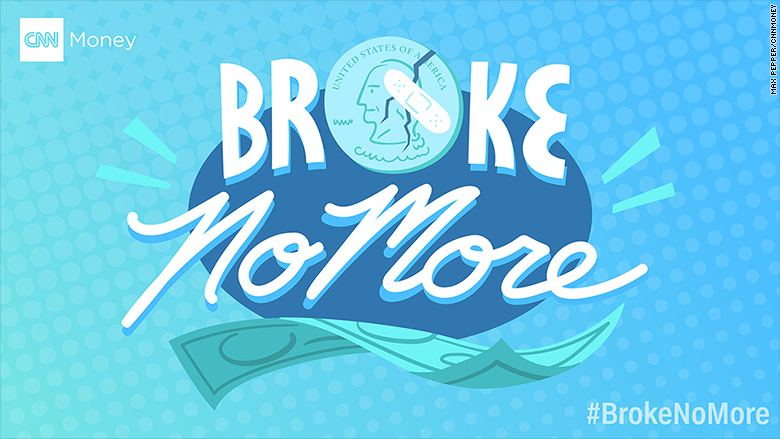
I am 29 years old and a single mother to a four-year-old. I contribute 6% to my 401(k) with a company match. I looked at several websites and they all state I'm on track for my retirement. My question is, should I put some extra money in a Roth IRA or fund a 529 plan for my daughter? --Kelly
If Kelly is truly on track saving for retirement, experts say she should open a 529 plan instead of a Roth IRA to start her daughter's college fund.
Hands down. (*Well, there could be an exception, which we'll get to later.)
Most states offer a 529 plan to help people save for college. You contribute after-tax dollars to the account, which are invested and allowed to grow tax-free. Sometimes your contributions are tax deductible, too, depending on the state.
Though they were created to help people save for retirement, Roth IRAs work in a similar way. But you don't get a tax deduction for your contributions.
The big difference between the two accounts is that the money in a 529 must be used for qualified higher education expenses, or else be slapped with a 10% penalty. The contributions you make to a Roth IRA can be withdrawn at any time for any reason. And you can take out the earnings on your investments in a Roth for more of your needs, including education expenses, buying your first home, and eventually retirement.
Will you have enough to retire?
Because of those options, a Roth IRA can be appealing. But a 529 plan is designed specifically for education savings, and will keep your money separate from retirement savings.
"Roth IRAs are definitely flexible, but the savings should be for retirement. I don't love it when someone invests in a Roth knowing that they are going to use it to fund college," said Eric Roberge, a CFP and founder of the firm Beyond Your Hammock.
Yes, you will be charged a penalty if you withdraw the money for something other than education expenses, but if your child doesn't end up going to college or gets a big scholarship, you can still transfer the unused savings in a 529 to another relative.
You can also save more money annually in a 529 plan than a Roth IRA. And it's possible you make too much money to open a Roth IRA to begin with. It's limited to those who earn less than $133,00 if single, or $196,000 if married.
Once you open either account, you'll be able to choose your investments. Your options will be limited by what's offered by the provider, and some have better menus than others.
"The only real benefit I see in using the Roth IRA for college education savings is if a sophisticated investor is able to really take advantage of greater investment flexibility," said Jorge Padilla, a CFP at The Lubitz Financial Group.
More from 'Broke No More'
How can I pay off my student loans and still have a life?
Ask us your money questions here
How to choose a 529 savings plan
In most cases, you can choose a 529 plan from any state you'd like and use the money for tuition, room and board at the college you choose. But if your state allows contributions to be tax-deductible, you probably want to stick with your home state to take advantage.
It's worth taking some time to research which plan will be best for you. See whether your contributions will be tax deductible and check out the fees and investment options. SavingForCollege.com ranks 529 plans based on their investment performance each quarter.
A handful of states offer prepaid 529 plans, which allow you to pay now at today's rates for school tomorrow for tuition at an in-state college. You might be able to use this money for an out-of-state school or a private school if that's where your child decides to enroll, but you might not get the full value.
How much should you save?
Experts always recommend you make sure you're on track for saving for your own retirement before putting money away for your child's college education.
"Children can always borrow to pay for an education but you will never be able to borrow to pay for your retirement," Padilla said.
Once you've made the decision to start a college fund for your son or daughter, you should try to estimate how much college is going to cost -- and how much of it you want to pay for.
This, of course, can be tricky if your child is just four years old. But there are several online calculators that can help. An American Funds calculator puts the cost at $168,189 for Kelly if her daughter attends a public, in-state college.

Related: 7 ways to pay for college without a scholarship
If Kelly wants to fund the entire cost, she'd have to save about $450 a month.
"Usually my clients see the number and say 'holy crap,'" Roberge said.
Remember, your child could receive scholarships or grants that lower the cost. One recent study found that scholarships covered 34% of the cost for the typical American family, and that parents pick up 29% of the bill.
How will your savings impact a financial aid award?
The amount of financial aid (scholarships, grants and loans) your child receives is largely based on your income. The more you have, the smaller the financial aid award will be.
Your savings, including those in a 529 plan, are treated more favorably than income. Like money in a checking or savings account, it won't reduce the award by as much as your income does.
This is another reason it would be better to save for college in a 529 instead of a Roth IRA. Withdrawals from the retirement account will be treated as income and could lower the financial aid award your child receives in the future if used to pay for the freshman and sophomore years of college. But 529 withdrawals will not be.
Send us your money questions for a chance to be featured in Broke no more! Ask us here.
